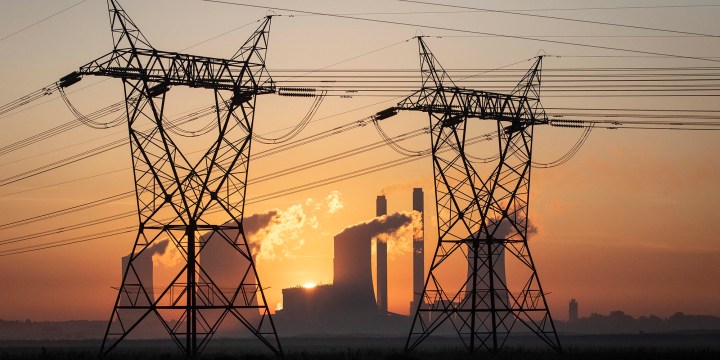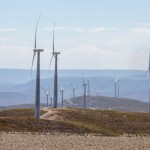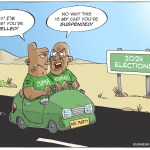POWER CRISIS OP-ED
Why splitting Eskom into three separate entities is a terrible idea

In South Africa, with very rapid growth in renewables, one thing we do not need is an unreliable transmission network. If we do not focus closely on where new power sources are going to appear, plan ahead for expanding the network and ensure that new capacity fits in, we will see the sort of problems that were experienced by the UK rail network and the Australian power grid.
Whether or not André de Ruyter is right about Eskom corruption, the State Capture report confirms the general problem, as do numerous other instances of failing state-owned enterprises and branches of government.
What I want to focus on here is the plan to split Eskom into separate companies handling distribution, transmission and generation. De Ruyter offered this idea to the government before being offered the CEO job and it had been floating around before his time. This is one plan that he backed that is still on the agenda, and it’s an awful idea.
First, terminology. Transmission is long-range power transmission over very high-voltage lines — up to hundreds of thousands of volts — which is more efficient than lower voltage. Distribution is closer to home, where the voltage starts getting stepped down until it is in the range of 220–240V.
In Eskom’s last annual report, the breakdown of maintenance costs is R13.4-billion for generation, R0.8-billion for transmission and R3.6-billion for distribution.
Long-range high-voltage lines are generally pretty reliable and do not need a lot of maintenance, as these numbers show: it amounts to less than 5% of Eskom’s 2021-2022 maintenance budget. Distribution is about 20% of the maintenance budget.
Looked at in terms of Eskom’s total costs, maintaining transmission is only 0.5% of the overall operating cost; maintaining distribution is only 2%. The problem that arises if you split these into separate entities is that the maintenance budget for the transmission and distribution operations becomes a large fraction of their operating budget, so there is a temptation to skimp.
For Eskom, maintaining the transmission part of the grid is only 0.5% of operating costs, so skimping on it would make hardly any difference to the bottom line. Distribution maintenance is a bigger cost but even so, if a separate company handled it, maintenance would be the main operating cost with the same incentive to cut corners and save money.
If distribution is neglected, because it requires more maintenance, this is likely to be spotted sooner and dealt with before it gets too severe. Municipal supply includes some of the distribution network, so the better-run municipalities could pressure the distribution company to perform. How this will work for municipalities that don’t pay their bills is another huge question.
Failures of maintenance of the long-haul network — transmission — are more likely to have large-scale consequences because each long-haul line covers a large number of consumers. If the transmission company saves a good fraction of its operating costs by neglecting maintenance, what will it lose if a significant part of the grid goes out? Pure economic rationality says it still scores if any penalties incurred are less than the saving on maintenance. The generation utility, on the other hand, for 0.5% of its operating cost, can minimise the odds of losing the ability to transmit power for long enough to lose big money.
Learn from other countries
Is this a purely hypothetical concern? A similar system was tried in Australia, with exactly the results I predict. The electricity system was split in the early 2000s as part of a 1990s privatisation push. Before this, each state government owned everything from generation to distribution.
After major system failures in South Australia in 2015, some tried to blame renewables. While adding diverse energy sources does make the design and operation of a grid more challenging, this does not cause the sort of systemic failures that arise from inadequate maintenance. The Australian situation is tricky to analyse because failures happened around the time renewables started to roll out in a big way.
A clearer example of the hazard of this kind of separation is the privatising of British Rail, which began in 1993. Operations were split into a company running the rail network, Railtrack, and operating trains was more of a free-for-all — on the same principle that anyone can run their own traffic on the internet.
Within four years of Railtrack taking charge of the infrastructure in 1996, train crashes resulted in more than 40 deaths and more than 600 injuries. After this disastrous start, Railtrack was renationalised.
The issue with British Rail is exactly the same as with the power grid. With a vertically integrated operation, maintaining the network is a relatively small part of the operating cost. If all you do is maintain the network, it is most of your operating cost.
In South Africa, with very rapid growth in renewables, one thing we do not need is an unreliable transmission network. If we do not focus closely on where new power sources are going to appear, plan ahead for expanding the network and ensure that new capacity fits in, we will see the same sort of problems experienced by the UK rail network and the Australian power grid. Only worse: those problems will be layered on top of Eskom’s existing failures.
If Eskom is to be restructured into more than one business, it would be better to split out small-scale renewables. A big challenge for municipalities is to manage three effects of load shedding: loss of revenue from lost consumption, loss of revenue from consumers going solar, and power backup for services.
All of this points to municipalities themselves investing in solar plus battery backup systems. They can cut service downtime and reduce lost revenue. Peak consumption is one of the biggest costs for a municipality and using its solar and battery system strategically could reduce peak demand from Eskom.
If Eskom split off part of its workforce to install and maintain solar plus battery backup for municipalities and later branched out to other sectors, that would generate a new source of cash flow. It would also put Eskom close to where new sources of solar are added to the grid, and enhance its planning for distributed sources of power.
But to repeat failed 1990s privatising experiments? Why? We know the outcome. DM
Philip Machanick is an emeritus associate professor of computer science at Rhodes University and a long-time climate and social activist.



















“Is this a purely hypothetical concern? A similar system was tried in Australia, with exactly the results I predict.”
“The Australian situation is tricky to analyse because failures happened around the time renewables started to roll out in a big way.”
The author immediately contradicts themselves, but expects us to trust the rest of their analysis?
“All of this points to municipalities themselves investing in solar plus battery backup systems.”
Except most municipalities do not have the funds to do this themselves.
This essay is just communist nonsense. You clearly explain how Transmission and Distribution maintenance costs less than Generation which is exactly why it should be evaluated independently as viable entity. Transmission will remain state owned and (hopefully) impartial to both public and private generators. No financier in his right mind will put money on Generation Balance sheet and the Treasury plan basically kills Generation as state owned as they also don’t intend permitting more borrowing by Eskom. More private players means competitive and eventually stable electricity prices for consumers.
This entire article is posited around a mistaken assumption.
The plan is to divide Eskom into 3 separate companies, all of which will remain State-Owned. Not to privatise them. The whole long story about maintenance becoming a bigger portion of operating costs is a red herring. If the primary purpose of your entity is to maintain an asset, then one would expect it to be maintained (Cadre deployment and corruption excepted 🙈)
By separating the entities, it will become more feasible for private generators to sell to the Distribution Company and “wheel” their power over the Transmission Company’s HV lines. Eskom’s Generating Company will have some competition, which will, ANC incompetence at suitable legislation aside, mean more power available, and an eventual end to LoadShitting.
The author knows nothing about electricity markets to say even less of liberalised electricity markets.
In addition to the excellent rebuttals above, the assumption that were would be a temptation to skimp on maintenance assumes that the grid company, whether distribution or transmission, company would be free to do as it pleases.
The thing is though, the grid company would remain a natural monopoly and, whether public or privately owned, there would be a need to regulate this.
This is in fact what happens everywhere else in the world where markets are split in this way, which is something you would know, if you knew anything about the subject.
The regulation, when well designed, is supposed to create a package of incentives and punishments to ensure that the grid operator both maximizes availability and makes sufficient investments into the grid to allow for future generation investment in the right places – something Eskom have done almost nothing to ensure in SA with its big renewables push.
After mentioning the point, does he not wonder why Eskom’s current maintenance costs for transmission are so low?
Curious also as to why, instead of talking about the UK electricity sector, the author chose to prattle on about their railways (which were a mess).
Is it because he started the research and then realised that the structure and functioning of the UK electricity market, pretty much rebutted his article’s central point?
These are complicated industries that defy easy simplification but I guess, screw it, once you’ve started writing something you might as well finish it